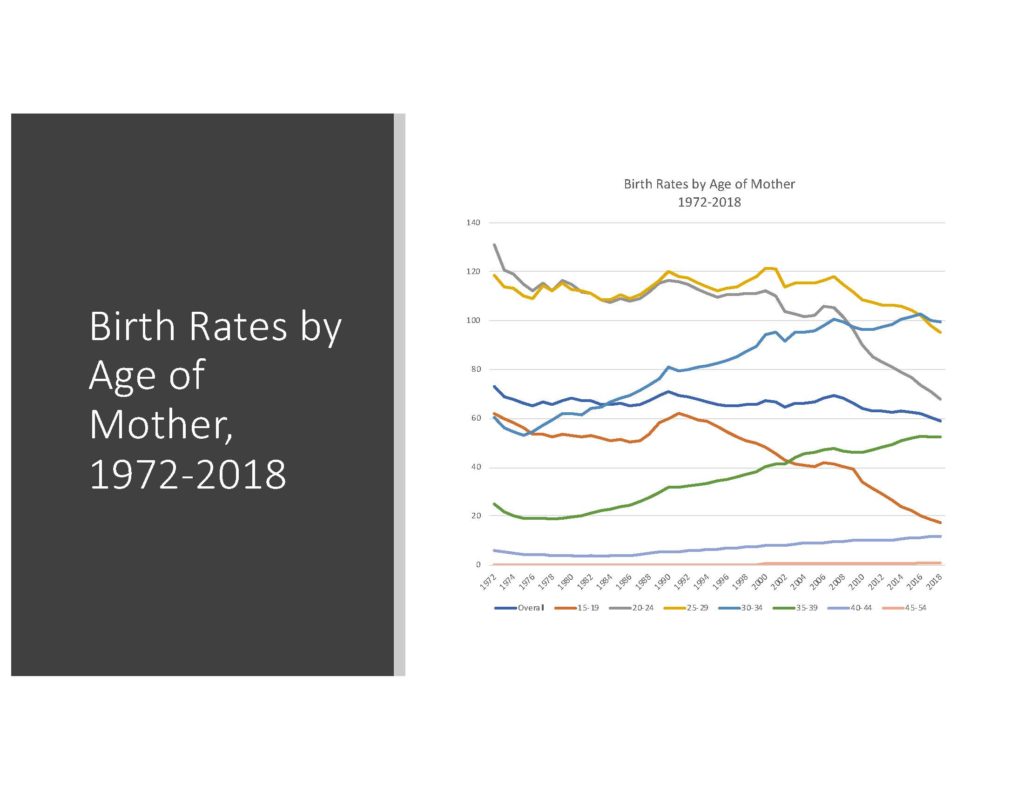For the 12th year in a row, births and birth rates are down overall and among all age groups under 35. 2018 births to teens were down 7% from 2017, as they also were in 2016–bringing the teen rate down 58% since 2007–from 41.5 births / thousand teens 15-19, to a mere 17.4! Teens, apparently, don’t want to have kids these days (did they ever, really?). And neither, apparently, do 20-24 year olds, whose birth rate is down 4% again this year, bringing their total decline to 36% since the start of the recession in December 2007. You can see the sharp falls reflected in the second and third groups of columns in the chart below. Rates fell 3% for women 25-29 (another record low) , and 1% for women 30-34.

On the other hand, rates rose for women 35+–including a 1% rise for women 35-39, a 2% rise for women 40-44, and while the rate for women 45+ stayed the same at 0.9 births per 1000 women 45-49 (since the number overall is very low–at 9,572), the number of births in this set increased by 3% over 2017. So the ripple-forward pattern of delay continues, though we’ll have to wait a decade or two to see whether the younger women refraining from childbirth today have numbers of children equal to or fewer than generations past did, by the time they “complete their fertility” at about 45 (for the most part).
The total number of births in 2018 was the lowest since 1986, at 3,788,235. The total fertility rate (aka the replacement rate) fell to 1.728 estimated total births per woman (2.05 is considered the generational replacement rate). Women’s new average age at first birth, though it will not be reported officially until the Final 2018 births report in Fall 2019, has clearly risen from its 2017 high (which was 26.8 years old)–to something like or surpassing 27.
See the post below for reflections on why this fall continues. Might there be connections between the ongoing decline and the current anti-abortion push? You be the judge.




